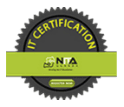As we continue to rely on technology more and more each day, it is no surprise the need for Managed Security Services (MSS) has increased in demand. The rise of cyber threats and attacks has made it crucial for businesses to prioritize their security measures. However, traditional data and network security methods may no longer be sufficient in today’s ever-changing technological landscape. This is where the role of automation in MSS comes into play.
Automation in MSS refers to using technology to streamline and improve security operations. It involves using various tools and technologies to help security teams manage and respond to security threats. Automation has become increasingly crucial in MSS, as it allows security analysts to focus on higher-level tasks and be more efficient in their work.
The Benefits of Automation in Managed Security Services
The Managed Security Services Automation in MSS has numerous benefits, including:
Improved accuracy and efficiency:
By automating repetitive and manual tasks, MSS providers can reduce the chances of human error and improve the accuracy of their security operations. Automation can also help teams work more efficiently by allowing them to focus on higher-level tasks.
Faster response times:
Automation can help teams respond to security incidents faster, reducing the time it takes to detect and respond to threats.
Reduced workload for security analysts:
Automation can take care of mundane and repetitive tasks,freeing up time for security analysts to focus on more complex tasks that require human expertise.
Enhanced threat detection and prevention:
Automation can help identify security threats that may go undetected by human analysts, increasing the overall effectiveness of security operations.
Improved compliance and regulatory adherence:
Automation can help organizations stay compliant with industry regulations and standards, reducing the risk of penalties and fines.
Types of Automation in Managed Security Services
There are several types of automation in MSS, including:
Security Information and Event Management (SIEM)
SIEM tools automate the collection, analysis, and reporting of security-related data from various sources. This includes log files, network traffic data, and other security-related events.
Network Access Control (NAC)
NAC tools automate controlling access to a network, ensuring that only authorized users and devices can access network resources.
Security Orchestration, Automation, and Response (SOAR)
SOAR platforms automate incident response processes, allowing security teams to respond to security incidents faster and more efficiently.
Vulnerability Management
Vulnerability management tools automate identifying and prioritizing vulnerabilities, helping security teams address critical vulnerabilities quickly.
Challenges in Implementing Automation in Managed Security Service
While automation in MSS offers numerous benefits, there are also several challenges that organizations may face when implementing automation. These include:
Integration with legacy systems
Integrating automation tools with legacy systems can be challenging, as older systems may not be compatible with newer automation technologies.
Lack of skilled personnel
Implementing and maintaining automation technologies requires specialized skills and expertise that may not be readily available in-house
Data quality and management
Automation tools rely on accurate and up-to-date data to function properly. Poor data quality and management can lead to inaccurate results and false positives.
Security and privacy concerns
Automation tools may require access to sensitive data and resources, raising concerns about data security and privacy.
Best Practices for Implementing Automation in Managed Security Services
To successfully implement automation in MSS, organizations should follow these best practices:
Conduct a comprehensive security assessment: Before implementing automation, it is essential to conduct a thorough security assessment to identify areas that require automation and prioritize automation initiatives.
Evaluate the business case for automation: It is essential to evaluate the business case for automation, considering the potential benefits and costs associated with implementing automation.
Choose the right automation tools: Organizations should choose automation tools that are compatible with their existing systems and offer the functionality required to address their security needs.
Define clear objectives and metrics: Organizations should define clear objectives and metrics for automation initiatives, ensuring they align with security goals and objectives.
Train and retain skilled personnel: Organizations should invest in training and retaining qualified personnel with the necessary expertise to implement and maintain automation tools effectively.
Final Thoughts
Automation has become increasingly crucial in Managed Security Services, helping organizations improve the accuracy and efficiency of their security operations, respond to security incidents faster, reduce the workload for security analysts, enhance threat detection and prevention, and stay compliant with industry regulations and standards. While there are challenges to implementing automation, following best practices and learning from successful case studies can help organizations overcome these challenges and achieve the benefits of automation in MSS. As technology continues to evolve, the role of automation in Managed Security Services will only become more critical in ensuring the security of our digital world.











